An Hachette UK Company
http://www.hachette.co.uk First published in Great Britain in 2009 by Hamlyn,
a division of Octopus Publishing Group Ltd
Endeavour House, 189 Shaftesbury Avenue, London, WC2H 8JY
www.octopusbooks.co.uk This eBook first published in 2010 by
Octopus Publishing Group Ltd. Copyright Octopus Publishing Group Ltd 2009 Some of the recipes in this book have previously appeared in other books published by Hamlyn:
The Asian Collection by Oona van den Berg
Fresh Thai by Oi Cheepchaiissara
Thai Marks and Spencer
Thai Cooking by Jackum Brown
Vegetarian Thai by Jackum Brown All rights reserved. No part of this work may be reproduced or utilized in any form or by any means, electronic or mechanical, including photocopying, recording or by any information storage and retrieval system, without the prior written permission of the publisher. ISBN: 9780600623106 1 2 3 4 5 6 7 8 9 10 This eBook produced by Textech Both metric and imperial measurements have been given in all recipes. Use one set of measurements only, and not a mixture of both. 1 tablespoon = one 15 ml spoon 1 teaspoon = one 5 ml spoon Ovens should be preheated to the specified temperature if using a fan-assisted oven, follow the manufacturers instructions for adjusting the time and the temperature. 1 tablespoon = one 15 ml spoon 1 teaspoon = one 5 ml spoon Ovens should be preheated to the specified temperature if using a fan-assisted oven, follow the manufacturers instructions for adjusting the time and the temperature.
Fresh herbs and spices (including chillies) should be used unless otherwise stated. Medium eggs should be used unless otherwise stated. The Department of Health advises that eggs should not be consumed raw. This book contains some dishes made with raw or lightly cooked eggs. It is prudent for vulnerable people such as pregnant and nursing mothers, invalids, the elderly, babies and young children to avoid uncooked or lightly cooked dishes made with eggs. Once prepared, these dishes should be kept refrigerated and used promptly.
This book includes dishes made with nuts and nut derivatives. It is advisable for those with known allergic reactions to nuts and nut derivatives and those who may be potentially vulnerable to these allergies, such as pregnant and nursing mothers, invalids, the elderly, babies and children, to avoid dishes made with nuts and nut oils. It is also prudent to check the labels of pre-prepared ingredients for the possible inclusion of nut derivatives.
DISCOVER MORE GREAT
EBOOKS FROM THE
HAMLYN ALL COLOUR
COOKBOOK SERIES



introduction
My purpose in writing this book is to show you, in as compact a form as possible, how to prepare a wide selection of popular Thai dishes, adding to each recipe at least one variation using slightly different ingredients. Because the book is so condensed, I have described in the introduction some of the ingredients you may not be familiar with, as well as some basic procedures and recipes. Whenever I go back to Thailand, Im always impressed by the high standard of cooking, not only in restaurants but also from the stalls in the many street markets you find all over Bangkok and other cities (and even along the major trunk roads).
So-called street food deserves a better name, because it bears little resemblance to its equivalent in the West. Wealthy people send out their maids to buy cooked food from the local market, knowing that it will have been prepared by someone who specializes in that particular dish, often bringing it to perfection. Thai people are justly proud of their cuisine and I am very happy to explain some of its secrets. 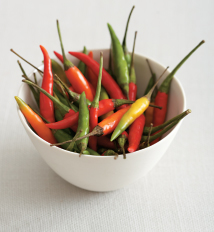 developing taste I gained my knowledge of Thai cooking partly from my family, partly from helping people who are masters of their art, and partly from my own experiments. All of this practical activity has been valuable, yet probably the most important part has been the entirely passive role of eating Thai food and developing good judgement about it. Maybe, too, theres a Buddhist element to this process coming from the monks who tell us to concentrate while we eat, to think about what we are doing, instead of munching away while talking about something else.
developing taste I gained my knowledge of Thai cooking partly from my family, partly from helping people who are masters of their art, and partly from my own experiments. All of this practical activity has been valuable, yet probably the most important part has been the entirely passive role of eating Thai food and developing good judgement about it. Maybe, too, theres a Buddhist element to this process coming from the monks who tell us to concentrate while we eat, to think about what we are doing, instead of munching away while talking about something else.
Thai people rarely eat in silence, but the conversation nearly always turns to the food in front of us. We discuss it avidly. Lovely, but a bit too salty, Almost perfect, but maybe a bit more tamarind, and so on. If you eat enough Thai food, especially with Thai friends, youll soon develop your palate. from the beginning If youre a complete beginner who has never cooked or even tasted Thai food, dont worry. This book describes the preparation and cooking step by step, using precise measurements.
In practice, Thai cooks are not inclined to be very precise about measurement, preferring to rely on their experience. For this reason, I have had to recreate the dishes rather than merely translate them from existing Thai recipes. 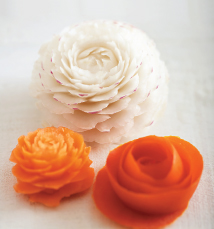 main characteristics Like a particular style of music, Thai food is instantly recognizable because dishes have certain characteristics in common. We are fond of using fresh herbs like lemon grass, galangal, ginger, coriander and kaffir lime leaves. We like the tasty parts of plants that grow below ground, like some of those just mentioned, plus shallots, garlic and others. Thai cuisine is the only one in the world to use the roots of the coriander plant as well as its stalks and leaves.
main characteristics Like a particular style of music, Thai food is instantly recognizable because dishes have certain characteristics in common. We are fond of using fresh herbs like lemon grass, galangal, ginger, coriander and kaffir lime leaves. We like the tasty parts of plants that grow below ground, like some of those just mentioned, plus shallots, garlic and others. Thai cuisine is the only one in the world to use the roots of the coriander plant as well as its stalks and leaves.
We are quite economical in our use of ingredients nothing is thrown away that can be saved for another dish. Apart from its distinctive range of ingredients, the other main characteristic of Thai food is the way in which we prepare it. For example, we like to cut meat into very thin slices so that it cooks quickly. Thai food tends to take quite a long time to prepare, but the cooking is usually quick and easy. For this reason, its ideal if youre having a dinner party because you can prepare the food an hour or two in advance, then cook and serve the meal right on time. equipment You dont need much special equipment for cooking Thai food.
Standard saucepans, plates and bowls can be found in most peoples kitchens. I should, however, mention a few really useful items: Nonstick wok this is a good investment if you plan to cook oriental food frequently; choose a size suitable for the number of people you plan to serve. Nonstick saucepans and frying pans are vital; always have at least one small pan for preparing sauces. Very sharp knife this is the most useful tool in the kitchen. Rolling pin and pastry boardSteamer


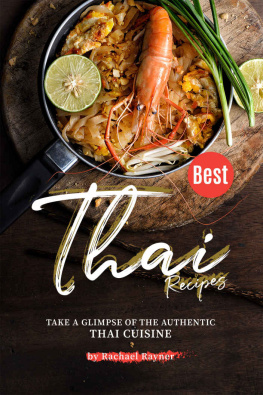
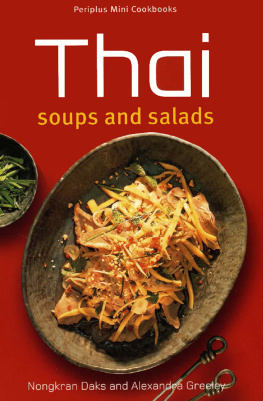
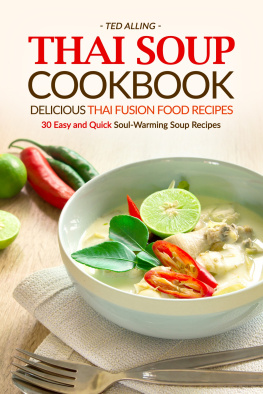
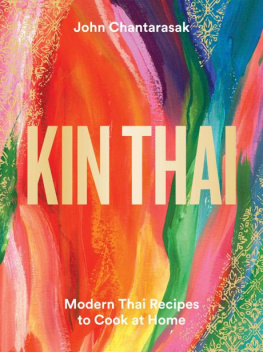
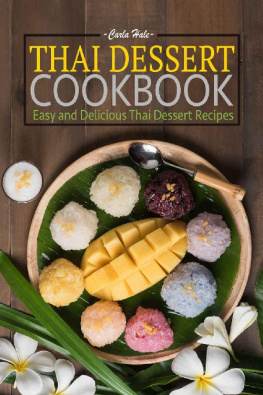
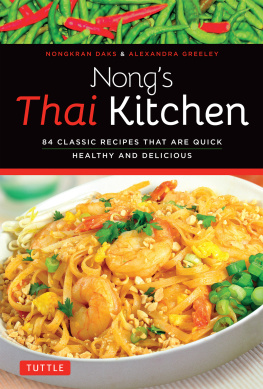
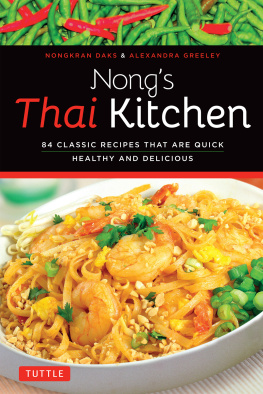
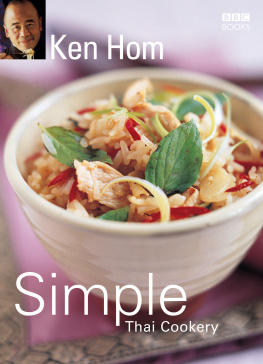

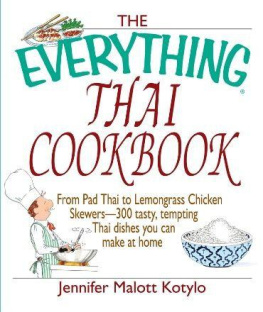
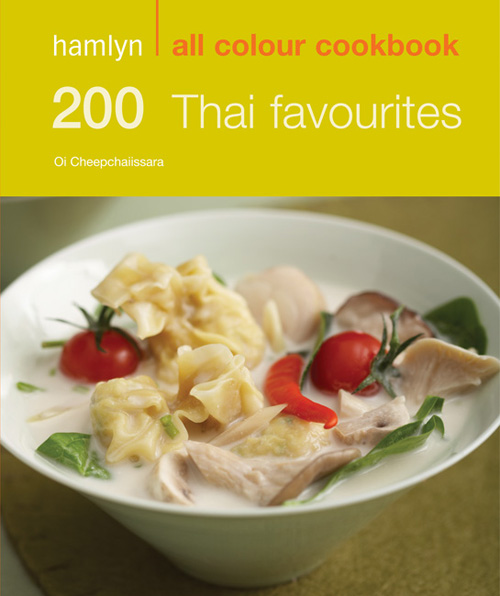
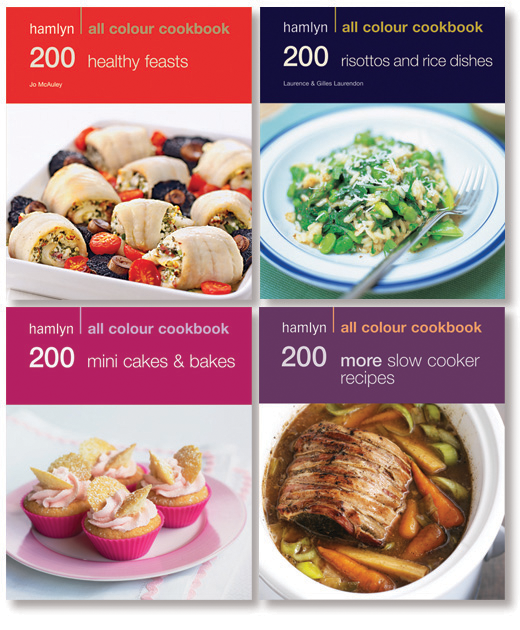



 developing taste I gained my knowledge of Thai cooking partly from my family, partly from helping people who are masters of their art, and partly from my own experiments. All of this practical activity has been valuable, yet probably the most important part has been the entirely passive role of eating Thai food and developing good judgement about it. Maybe, too, theres a Buddhist element to this process coming from the monks who tell us to concentrate while we eat, to think about what we are doing, instead of munching away while talking about something else.
developing taste I gained my knowledge of Thai cooking partly from my family, partly from helping people who are masters of their art, and partly from my own experiments. All of this practical activity has been valuable, yet probably the most important part has been the entirely passive role of eating Thai food and developing good judgement about it. Maybe, too, theres a Buddhist element to this process coming from the monks who tell us to concentrate while we eat, to think about what we are doing, instead of munching away while talking about something else. main characteristics Like a particular style of music, Thai food is instantly recognizable because dishes have certain characteristics in common. We are fond of using fresh herbs like lemon grass, galangal, ginger, coriander and kaffir lime leaves. We like the tasty parts of plants that grow below ground, like some of those just mentioned, plus shallots, garlic and others. Thai cuisine is the only one in the world to use the roots of the coriander plant as well as its stalks and leaves.
main characteristics Like a particular style of music, Thai food is instantly recognizable because dishes have certain characteristics in common. We are fond of using fresh herbs like lemon grass, galangal, ginger, coriander and kaffir lime leaves. We like the tasty parts of plants that grow below ground, like some of those just mentioned, plus shallots, garlic and others. Thai cuisine is the only one in the world to use the roots of the coriander plant as well as its stalks and leaves.